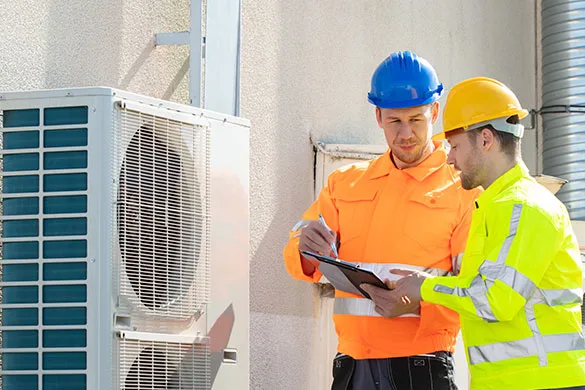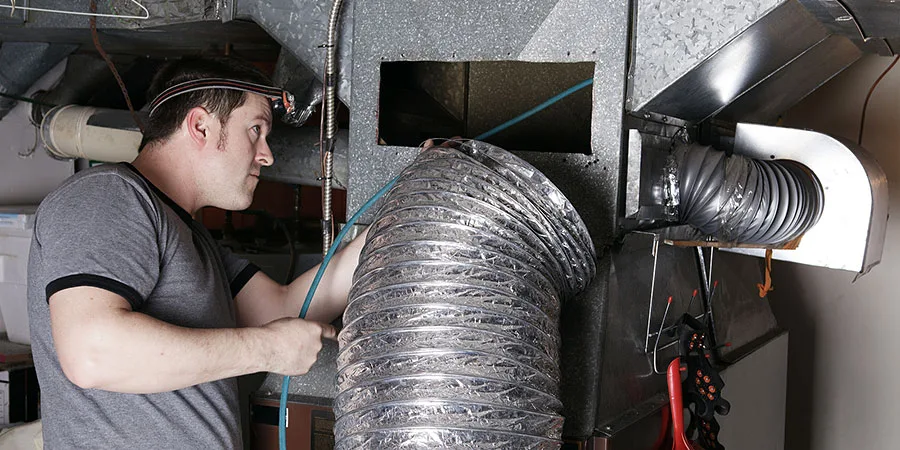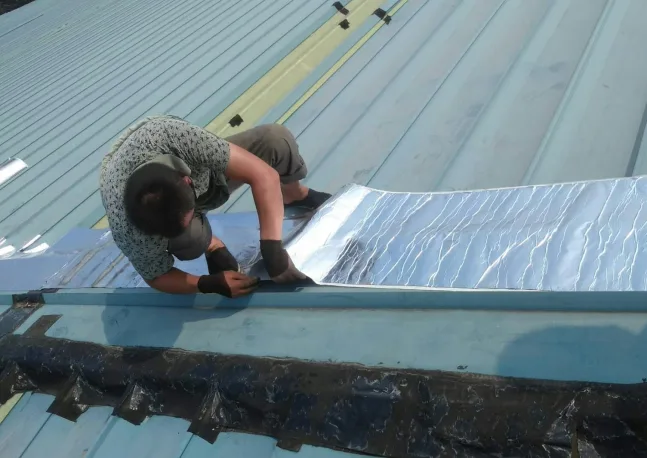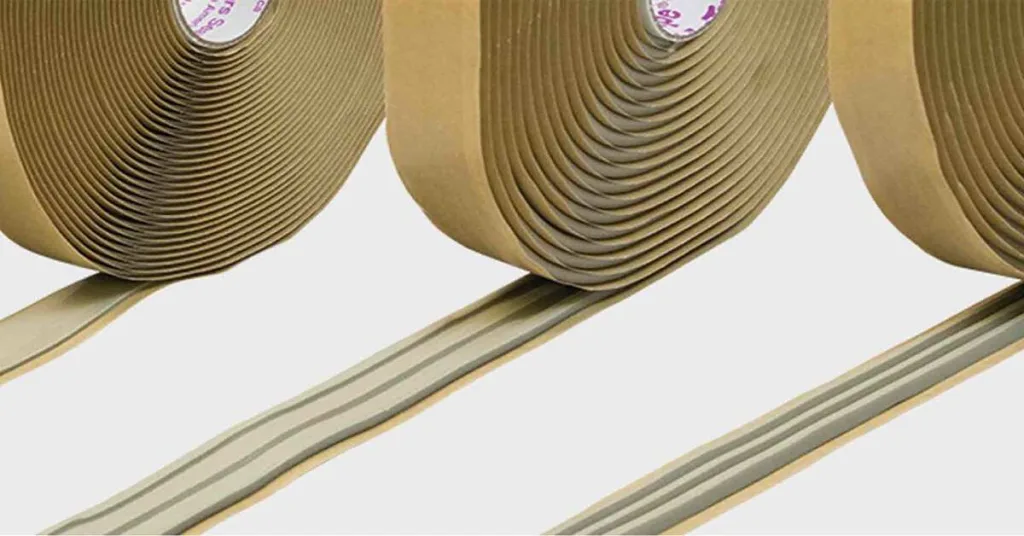Did you know that HVAC systems are responsible for up to 50% of a building’s energy consumption? The efficiency of these systems doesn’t just depend on the quality of the units themselves but also on the often-overlooked materials used to seal and secure ductwork—like HVAC tape. Today, we’re diving into the world of HVAC tape to explore how it ensures system efficiency, meets compliance standards, and helps contractors build long-lasting, effective systems. Whether you’re a seasoned professional or just curious about the science behind the tape, this guide will provide insights to level up your HVAC knowledge.
What are UL 181A-P and UL 181B-FX?
Why UL Listings Matter in HVAC Tape
In HVAC systems, UL listings are essential for meeting building codes. A UL listing guarantees that HVAC tape has the necessary adhesion and shear strength to stay in place for the life of the system. Tapes undergo a rigorous series of tests to earn UL certifications, including: Flame Resistance;
Mold Growth & Humidity Testing;
Temperature Durability;
Static Load and Impact Resistance;
Pressure and Leakage Testing.
These tests ensure the tape meets the high standards necessary for safety and performance.

UL 181A-P
UL 181A-P is the gold standard for HVAC tapes used to seal rigid ductwork or duct boards. These tapes must be made of aluminum or aluminum alloy foil, be at least 2.5 inches wide, and include a release liner. Because of these stringent requirements, UL 181A-P tapes provide exceptional long-term performance and reliability.
UL 181B-FX
For Class 1 flexible ducts, UL 181B-FX tapes are the go-to option. These tapes can be made from various materials such as foil, film, or cloth, and must have a minimum width of 1.825 inches. They’re designed to create durable seals for the more pliable components of HVAC systems. Unlike their rigid counterparts, these tapes are ideal for systems where flexibility is critical.
What are the Differences Between Adhesives on HVAC Tapes?
Rubber Adhesives
Rubber adhesives—natural or synthetic—provide excellent tack and adhesion to many surfaces. However, they struggle in cold environments, particularly when temperatures drop below 32°F. While they’re great for indoor applications, they’re less ideal for outdoor or extreme conditions.
Butyl Adhesives
Butyl adhesives are the workhorses of the HVAC tape world. Known for their durability and flexibility, they’re often used in applications requiring an airtight seal. With a service temperature range of -20°F to 200°F, butyl tapes are perfect for environments with fluctuating temperatures, like unconditioned attics. However, their application temperature range (35°F to 110°F) is narrower, so timing the installation is critical. Their aggressive adhesive properties often necessitate a release liner to prevent the tape from sticking to itself.
Acrylic Adhesives
Acrylic adhesives offer an impressive balance of tack, adhesion, and shear strength. They can withstand temperatures from -30°F to 300°F and resist thermal and UV degradation, making them ideal for long-term, outdoor use. Their ability to form a permanent bond is critical for HVAC systems where reliability is non-negotiable. However, due to their aggressive nature, these tapes typically come with a liner as well.
Related article: adhesives used in tapes.
Why Does HVAC Work Get Inspected?
Inspections are a cornerstone of HVAC work, ensuring systems meet safety and efficiency standards. Poorly installed ductwork or subpar materials can lead to air leaks, increasing energy consumption and utility bills.

The Role of HVAC Tape in Inspections
Inspectors look closely at ductwork connections, which often require HVAC tape to create airtight seals. Non-compliance with UL listings can result in failed inspections, rework, and damaged reputations for contractors. Using UL-listed HVAC tape guarantees that systems are resistant to fire, mold, and humidity—key factors for passing inspections. In fact, studies have shown that air leaks can increase energy costs by up to 30%, highlighting the importance of proper sealing.
Related article: HVAC tape and reflective insulation.
How Do Commercial and Residential HVAC Systems Differ?
Size and Capacity
Commercial HVAC systems are designed to handle larger spaces and heavier workloads compared to residential systems. For example, according to EIA, the average size of new commercial buildings has increased by 18% over the last few decades, while residential buildings have grown by nearly 50%. Larger systems mean more ductwork and more opportunities for failure points—making high-quality HVAC tape essential.
Efficiency and Compliance
Commercial systems must meet stricter energy efficiency standards, often requiring UL-listed tapes for all ductwork. The sheer size of commercial buildings increases the risk of inefficiency, making reliable sealing crucial. Residential systems, while smaller, benefit equally from proper sealing to maintain efficiency and reduce utility costs.
Durability
Commercial HVAC systems run almost continuously, requiring materials that can withstand constant stress. Residential systems, in contrast, may only run for part of the day, but still benefit from the long-term reliability provided by UL-listed HVAC tape.
Conclusion
Understanding the role of HVAC tape in efficiency and compliance is critical for building effective, long-lasting systems. From UL listings to adhesive types, every detail matters. At Fonitaniya Adhesive Company, we’ve been innovating adhesive solutions for over 15 years, offering premium HVAC tape designed to meet the highest standards. Whether you’re sealing a residential system or a massive commercial project, our products ensure code compliance and optimal performance.
FAQs About HVAC Tape
What is HVAC tape used for?
HVAC tape seals ductwork and ensures airtight connections to maintain system efficiency and compliance.
Can HVAC tape withstand high temperatures?
Yes, certain HVAC tapes with acrylic adhesives can handle temperatures up to 300°F.
What happens if HVAC tape isn’t used?
Without HVAC tape, air leaks can occur, leading to higher energy costs, system inefficiency, and potential code violations.




